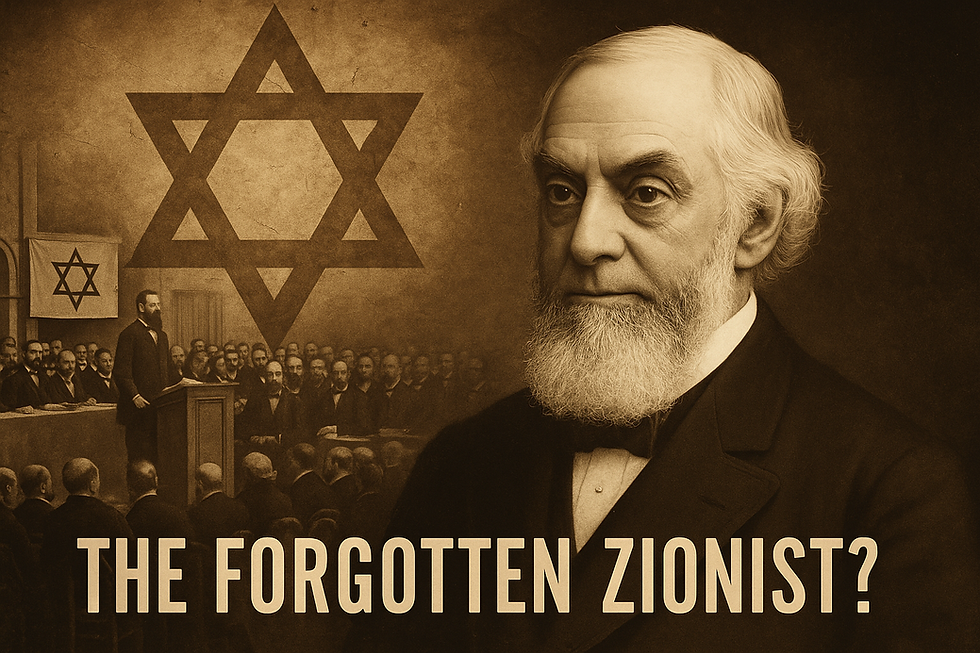What Happened to Kingdom Work? How Futurist Eschatology Changed the Church's Role in the World
- Dwaine C. Senechal

- Jun 25
- 3 min read
Updated: Jun 26

For centuries, the church was more than a preaching center. It was a cultural engine—founding schools, building hospitals, challenging slavery, and shaping the laws of nations. But something changed. As Dispensational Premillennialism rose in the mid-1800s, the church began to retreat from kingdom work, narrowing its mission to soul-winning and prophecy charts. The results were profound.
This article compares the real, on-the-ground social impact of the church before and after the rise of Futurist eschatology.
The Church Before Futurist Eschatology: Kingdom on Earth
From the 1600s to the early 1800s, the dominant eschatological views were Postmillennialism and Amillennialism. Christians believed that Christ’s reign was already active and expanding through His people. As Jonathan Edwards once said, "The work of God in converting souls... is the principal means of carrying on this glorious work of God, which is the setting up the kingdom of Christ in the world" (Works of Edwards, Vol. 4).
William Wilberforce was a Member of Parliament for 45 years and began his campaign against the slave trade in 1787. The British Parliament passed the Slave Trade Act in 1807, and Wilberforce lived just long enough to see the Slavery Abolition Act enacted in 1833, which freed over 800,000 slaves in the British colonies. Charles Finney, known as the father of modern revivalism, regularly preached that slavery was incompatible with the gospel. According to historian Timothy Smith, "revivalism and abolitionism were intertwined expressions of the same kingdom vision."
Education was a core strategy of kingdom influence. Harvard (1636), Yale (1701), and Princeton (1746) were founded explicitly to train clergy and Christian leaders. In the UK, Robert Raikes began the Sunday School movement in the 1780s, which by 1831 educated over 1.25 million children—a staggering number in a population of about 14 million (British and Foreign School Society report, 1831).
Medical and mercy ministries flourished. George Müller cared for over 10,000 orphans through faith-based support, never requesting funds publicly. Florence Nightingale, a devout Christian, believed that nursing was a form of divine service. Catholic religious orders had established over 400 hospitals worldwide by 1800 (Catholic Encyclopedia, 1913).
The church helped shape law and government. John Witherspoon, signer of the U.S. Declaration of Independence, taught at Princeton that "civil liberty grows out of religious liberty." Missionary William Carey not only translated the Bible into Bengali, Oriya, and Hindi, but also lobbied against sati (widow-burning), which the British formally banned in 1829 due in large part to Carey’s efforts.
The vision was clear: Christians were to disciple nations (Matt. 28:19), not escape from them.
The Church After Futurist Eschatology: Escape, Not Engagement
The mid-19th century saw a theological upheaval. John Nelson Darby introduced Dispensational Premillennialism, which taught that Christ's kingdom was delayed and that the church's job was to rescue souls before an inevitable global collapse. C.I. Scofield's Reference Bible (1909) embedded this view into millions of evangelical homes.
Social retreat followed. After the Fundamentalist-Modernist controversy in the 1920s, many evangelicals distanced themselves from public institutions. Historian George Marsden observed, "The fundamentalists abandoned the culture to save the church" (Fundamentalism and American Culture, 1980).
Missions also shifted. Whereas 19th-century missionaries built schools and hospitals, 20th-century missions often centered on rapid evangelism campaigns. By 1950, World Vision, Campus Crusade, and similar groups focused primarily on personal conversion, not social reform (David Bosch, Transforming Mission, 1991).
The obsession with prophecy grew. Hal Lindsey's Late Great Planet Earth (1970) sold over 28 million copies by 1990, warning readers to avoid investing in a world that was about to end. Churches began to prioritize end-times conferences over civic engagement.
Education followed suit. Bible colleges proliferated, while Christian influence in universities declined. By 1980, fewer than 10% of U.S. evangelical students were enrolled in liberal arts universities (Barna Group, 2001).
Politics was re-entered, but from a defensive posture. Jerry Falwell's Moral Majority (founded 1979) rallied millions, not to reform society through gospel-centered justice, but to fight perceived moral decay. Christian Zionist movements exploded, not out of biblical justice for Jews and Arabs, but to fulfill prophecy.
Final Word
What we believe about the end changes how we live in the present. Before Futurism, Christians believed they were active agents of Christ’s kingdom, reforming institutions and discipling nations. After Futurism, many Christians came to see themselves as tourists awaiting rescue.
As Dutch theologian Abraham Kuyper declared, "There is not a square inch in the whole domain of our human existence over which Christ... does not cry, 'Mine!'" The gospel of the kingdom is not about escape but about transformation. Jesus reigns now. Let His kingdom come—in every sphere.
References:
Jonathan Edwards, Works, Vol. 4
Timothy L. Smith, Revivalism and Social Reform
George Marsden, Fundamentalism and American Culture
David Bosch, Transforming Mission
Abraham Kuyper, Sphere Sovereignty
British and Foreign School Society Annual Report (1831)
Catholic Encyclopedia (1913), "Hospitals"
Barna Group Research, "Evangelical Higher Education Trends" (2001)




Comments